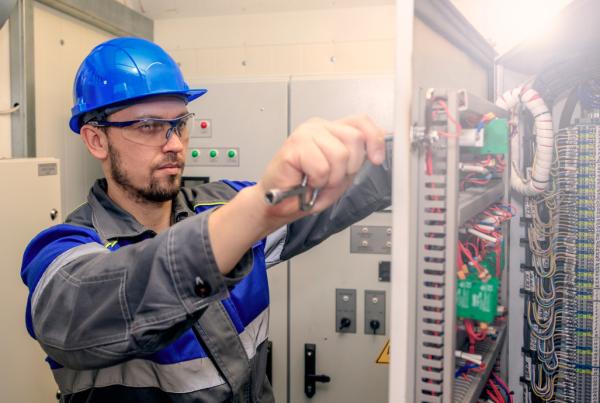We’ve talked about what preventative/predictive maintenance is, how it works, and its pros and cons in a previous article, but there is much more to explore when it comes to the different types of maintenance this covers. There are different ways engineers may choose to go ahead with analysis and maintenance, each geared towards achieving the same result differently.
Here, we will go over some of the most common types of predictive maintenance used by engineers at commercial and industrial facilities.
Types of Predictive Maintenance
Time-based Maintenance (TBM)
Engineers service a heating/cooling unit, manufacturing plant, or machine every few months to ensure that it continues operating without any issues. For example, we clean the HVAC unit’s filters every 20 days to not choke up the air intake and cause other problems; this is known as time-based maintenance.
TBM may involve a simple inspection or be as extensive as a part replacement, and equipment maintenance frequency is based entirely on the past performance or requirements of the machine. Here are some pros and cons of TBM.
| Pros | Cons |
| Uses less workforce | Over-maintenance |
| Easier to keep track of | |
| Helps track any other upcoming or underlying issues |
This predictive maintenance is informed by a ‘better safe than sorry’ perspective.
Failure-Finding Maintenance
Failure-finding maintenance is done to ensure that the machine or equipment is in working order and will continue to be so a few months or a year down the road. This type of predictive maintenance is usually aimed at protective devices, which, if damaged or discolored, are indicative of a potential threat.
Examples include manufacturing or assembly line alarms, leaking oil, discolored filters, and more.
If something is found in this type of maintenance, it might indicate an imminent failure and should be addressed immediately. In many cases, some fail-safes cause the machine to trip if something critical is about to go wrong.
Risk-Based Maintenance
This strategy helps engineers decrease mechanical failures by reviewing the different risks associated with the equipment and prioritizing maintenance activities. During this maintenance, the probability of failure is measured for every machine and equipment, and those with higher risk are optimized for safety, performance, and resources.
Condition-Based Monitoring (CBM)
With this type of predictive maintenance, the asset’s condition is reviewed to determine the type of maintenance that needs to be done and when. Normal wear and tear are among the biggest considerations made here, and the main focus is reliability. CBM usually includes:
- Visual inspection
- Measuring vibrations
- Any debris because of wear and tear
- Average functioning temperature
- Sound volume and type
When it comes to your critical systems and equipment maintenance, you must take every step necessary to make sure your investment remains safe. Saving and cutting back on maintenance costs can lead to serious problems in the future.
If you would like to implement a predictive maintenance model in your company but aren’t sure how or would like to learn more about the different types of predictive maintenance your commercial facility can benefit from, give us a call. Let us help you secure a less problematic and safer future.




